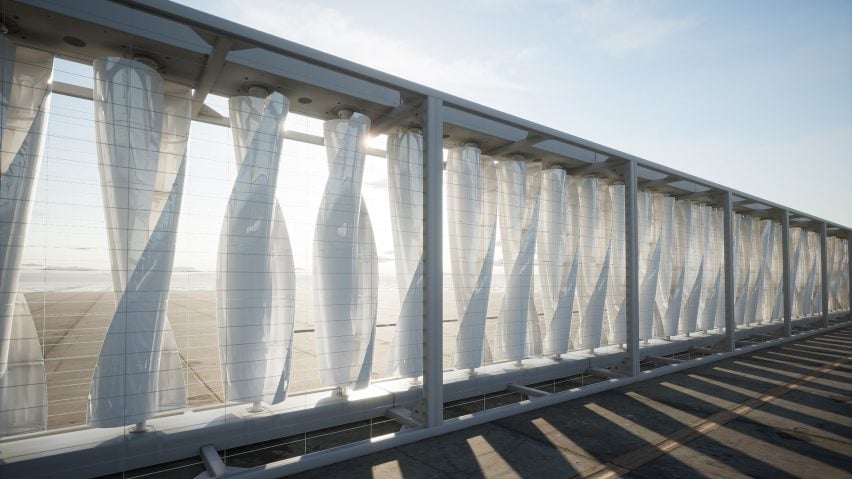
Joe Doucet's Airiva wind turbines are made for city streets and buildings
Designer Joe Doucet has revealed his Airiva turbine – a modular wind power system that was conceived to have the necessary visual appeal to fit into urban settings.
Currently a prototype, the Airiva energy system features two-metre-tall vertical blades with a sculptural helix shape rather than the propeller style commonly seen on large wind farm turbines.
These blades create a mesmerising flowing movement as they spin, which is key to the design according to Doucet, as it helps these systems to be seen as a desirable addition to buildings, campuses or roadsides.
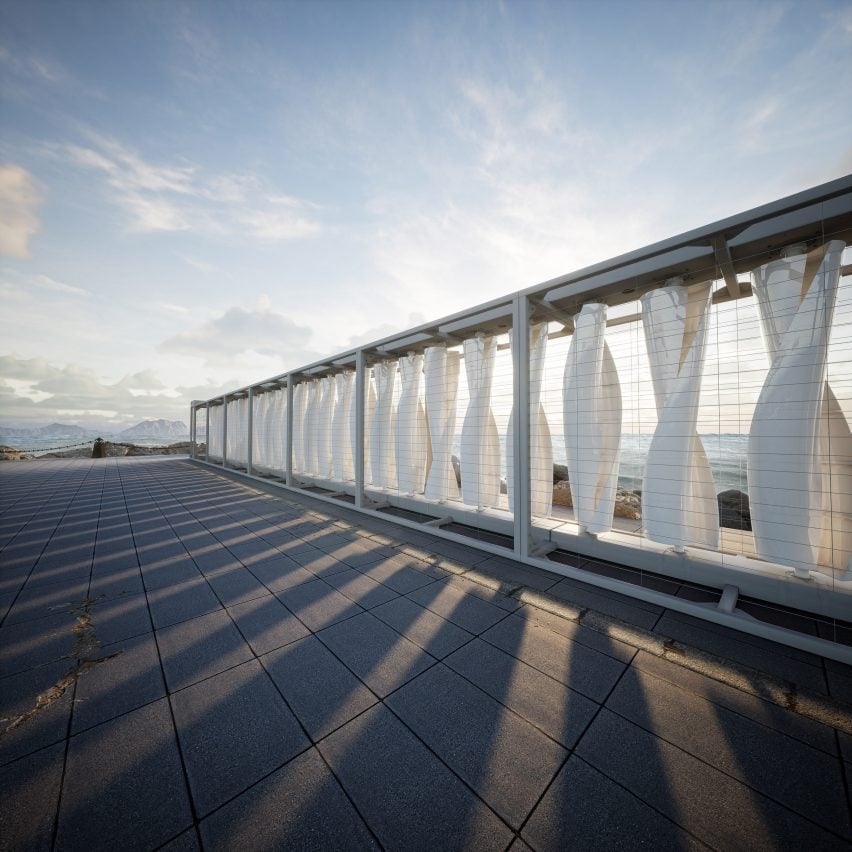
"The elevated design plays a meaningful role in adoption and integrates within the architecture and infrastructure of our urban and suburban landscapes to bring clean energy closer to where we live and work," said Doucet.
Airiva is a form of distributed energy generation, which refers to the kind of energy production that happens on rooftops, gardens or other small sites for use by the property's owner or others in the surrounding area.
Proponents of distributed energy infrastructure argue that there is less power loss when energy is used locally and that these systems give their users resiliency against grid outages.
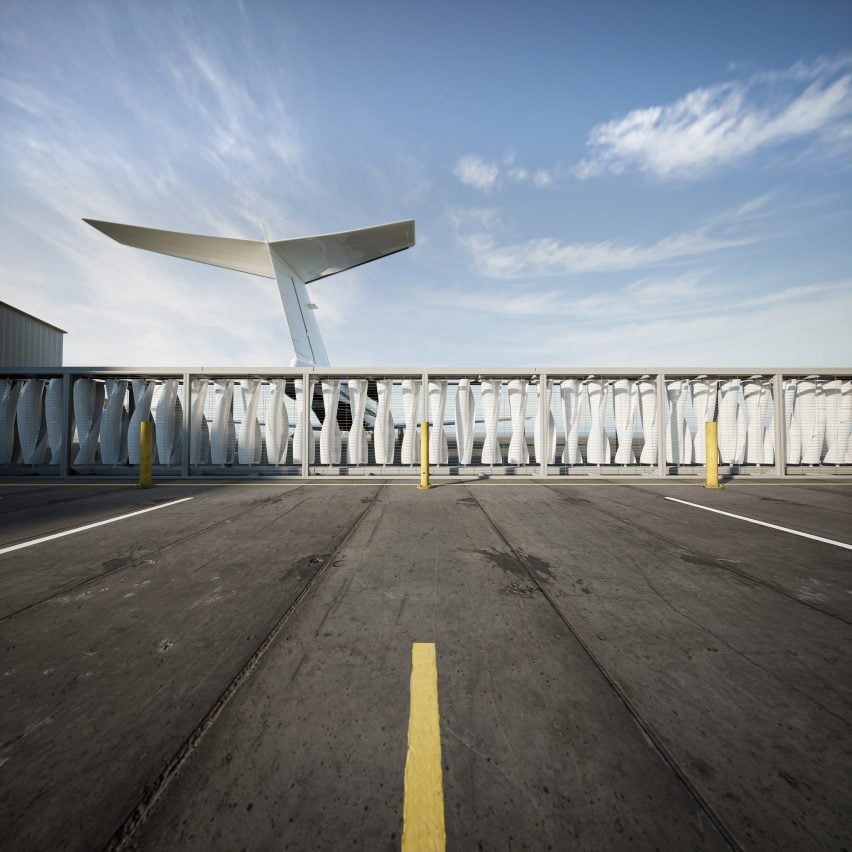
To make Airiva adaptable to many urban scenarios, the system is modular and scalable with four blades enclosed in square "wall segments" that can be joined together to make a unit of basically endless length.
"The Airiva wind energy system complements and co-exists with other renewable energy systems while expanding the applications for distributed wind energy," Doucet told Dezeen.
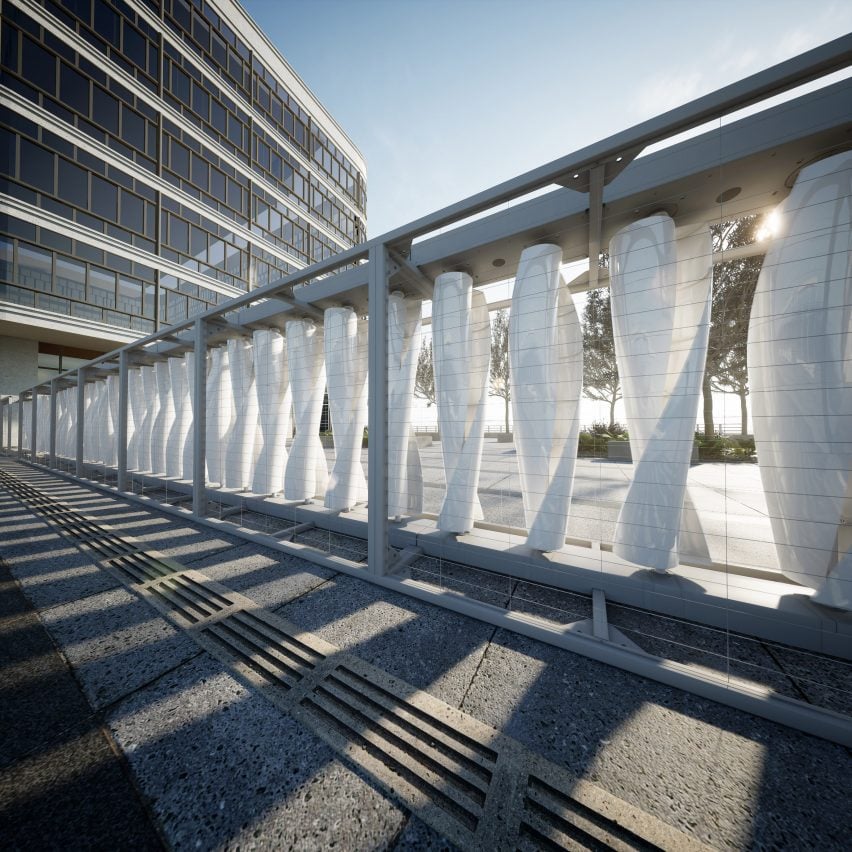
Doucet first designed a version of the Airiva concept in 2021 after researching distributed energy products for a project and finding there weren't many made with attention to aesthetics.
Then called the Wind Turbine Wall, the concept design received enough attention online that Doucet was driven to launch Airiva in partnership with tech industry veteran Jeff Stone.
The current version of the design is the result of two years of engineering, development and testing, with the key change being to the shape and size of the blades.
Their helical shape emerged as the most high-performing after 16 blade concepts were evaluated and three versions tested at wind tunnel facilities.
The turbines are not designed to be as powerful as the large industrial variety, with Airiva estimating that each wall segment of four turbines can provide 1,100 kilowatt-hours in annual energy production (AEP) based on initial testing.
To meet the total energy demands of the average US home, it would take a system with ten segments or 40 turbines.
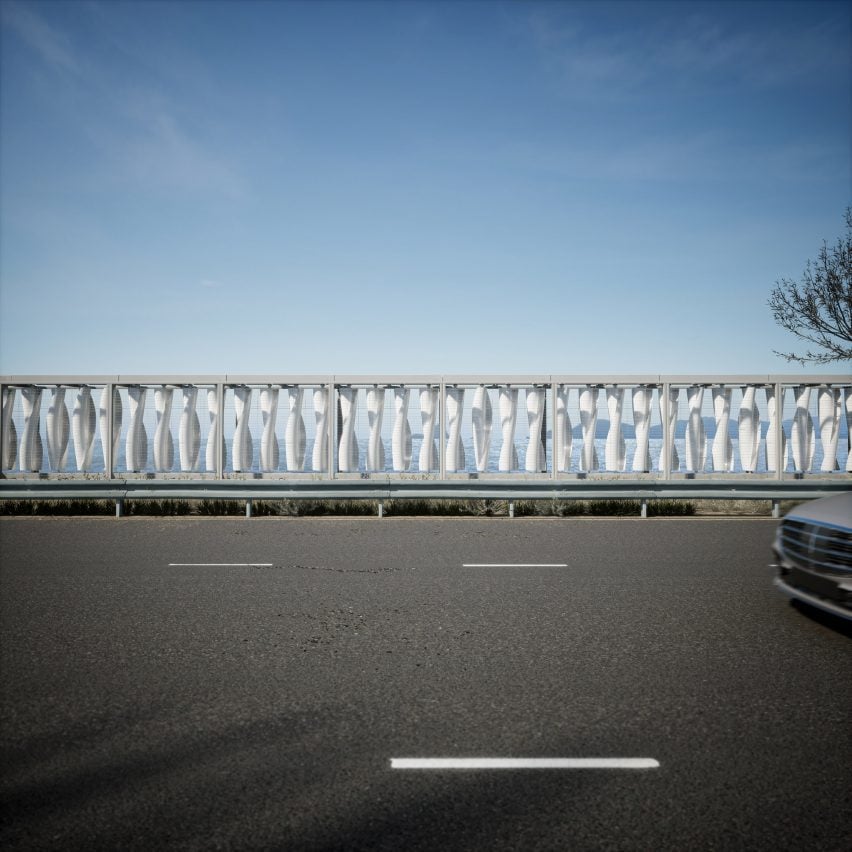
However, Airiva was designed to supplement rather than replace other energy sources such as grid electricity, and the company expects its systems to significantly contribute to meeting the energy demands of urban buildings.
In particular, the company plans to target the commercial market and has identified commercial buildings and campuses, municipal and public facilities, airports, road and rail infrastructure networks, and harbours and coastal areas as good potential sites for its units.
The Airiva segments are made of aluminium with injection moulded plastic for the blades. The company has a target of using 80 per cent recycled materials once it begins to manufacture.
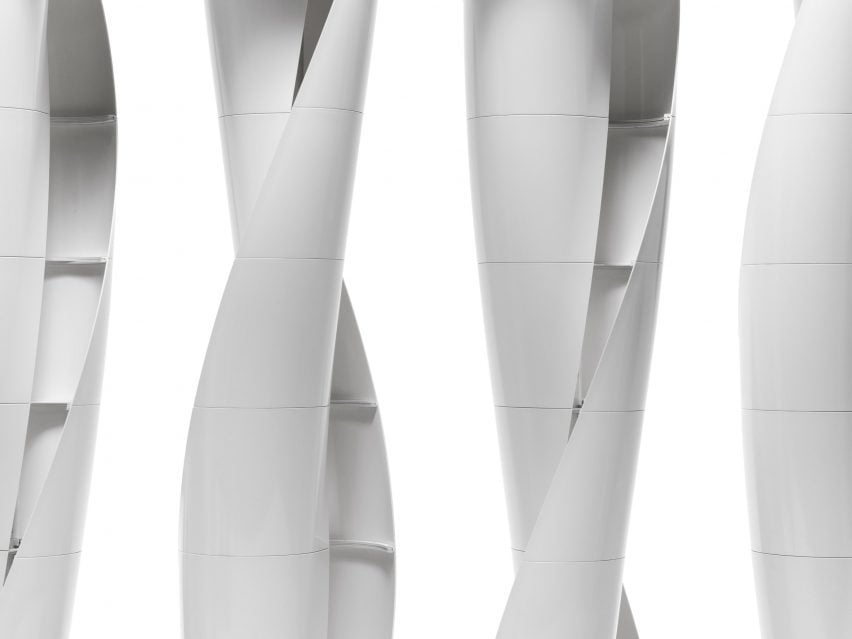
Airiva will test a full-scale prototype of its unit later this year, which will consist of two wall segments with four turbines each, plus an "end hub" to house the controls, communications and power management.
The company plans to conduct customer pilots in the second half of 2024, with the aim of taking the first orders in 2025.
Other projects aimed at squeezing turbines into dense urban contexts include the wind-powered Papilio street lamp and the multi-directional O-Wind turbine, which won the 2018 James Dyson Award.
Doucet is a New York-based designer whose practice focuses on innovation and sustainability. Another one of his ventures is Othr, a brand for 3D-printed homewares.